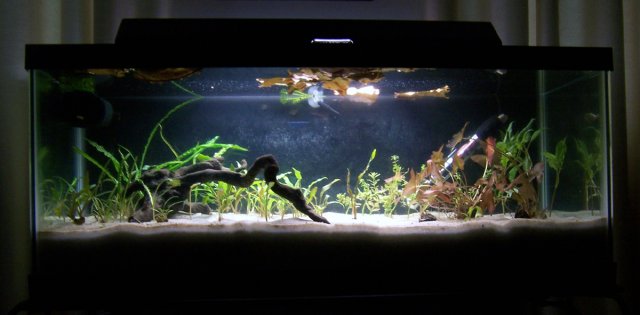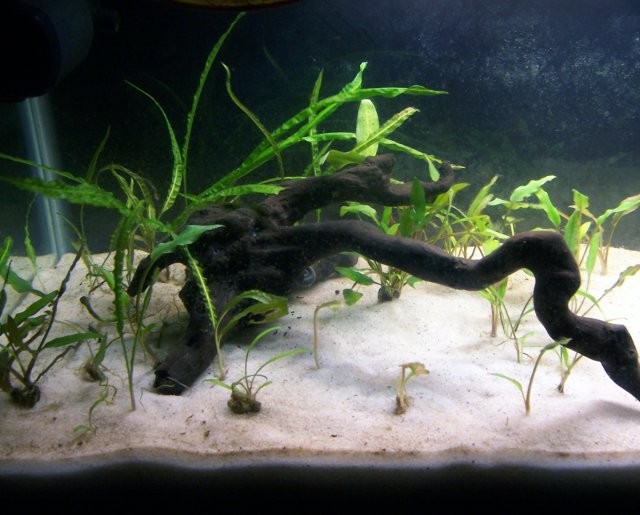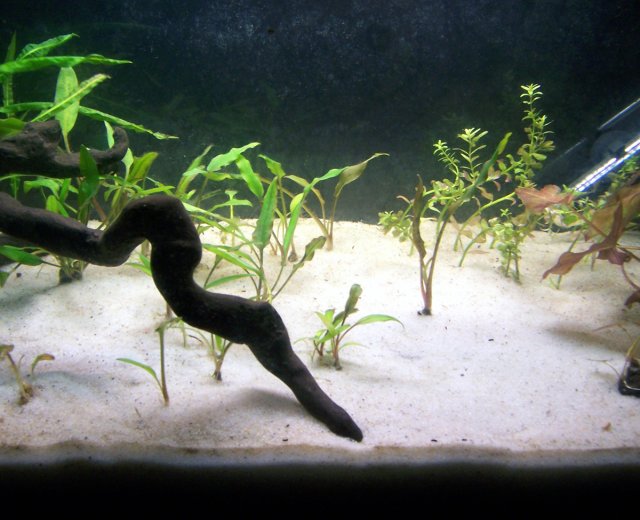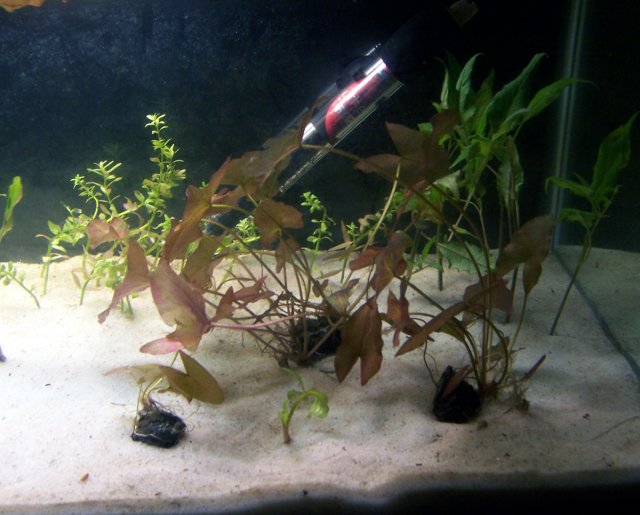Looking back, I almost wish I’d started a journal to chart the comedy of errors I’ve experienced (and committed!) with this tank. I set it up about two months ago, have planted/scaped it repeatedly with and without various rocks, wood and other decor, battled staghorn and thread algae, lost a number of plants ... and finally managed to transition from what I had envisioned to something that I think will please me just as much and actually work. What a concept. 
Here's the full tank, not looking too shabby, despite the floating pieces of ketapang leaf, the silly-looking white suction cup on the temp probe, and the too-short light fixture. (Correct size on order!)

This is the start of a Cryptocoryne jungle with crispatula (Ballansae), walkeri and undulata. See the pretty blue ramshorn?

Picture kuhlis and ketapang leaf litter here.

Lovely Nymphaea stellata. No matter what mistakes I make or how often I uproot and move them, these little lilies just keep putting out roots and leaves. Behind them are bits of Rotala rotundifolia (indica?) and Hygrophila corymbosa “Siamensis” that survived the Staghorn Wars. I’m hopeful about the rotala, doubtful about the hygro.

At the time the photos were taken, tank denizens included a few MTS from the LFS, and a variety of hitchhikers, including the blue ramshorn, a ridiculously fertile pond snail, planaria, nematodes, and nearly invisible things that could be copepods or newly hatched snails or ... ?
The first actual fish when into the tank yesterday. More about that later.




Here's the full tank, not looking too shabby, despite the floating pieces of ketapang leaf, the silly-looking white suction cup on the temp probe, and the too-short light fixture. (Correct size on order!)

This is the start of a Cryptocoryne jungle with crispatula (Ballansae), walkeri and undulata. See the pretty blue ramshorn?

Picture kuhlis and ketapang leaf litter here.

Lovely Nymphaea stellata. No matter what mistakes I make or how often I uproot and move them, these little lilies just keep putting out roots and leaves. Behind them are bits of Rotala rotundifolia (indica?) and Hygrophila corymbosa “Siamensis” that survived the Staghorn Wars. I’m hopeful about the rotala, doubtful about the hygro.

At the time the photos were taken, tank denizens included a few MTS from the LFS, and a variety of hitchhikers, including the blue ramshorn, a ridiculously fertile pond snail, planaria, nematodes, and nearly invisible things that could be copepods or newly hatched snails or ... ?
The first actual fish when into the tank yesterday. More about that later.






